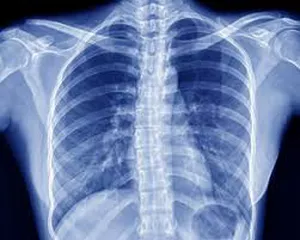Reducing dose starts with the detector. The choice of panel phosphor technologies can facilitate a dose reduction of up to 60% as well as improved image quality. With needle phosphor technology, there is higher x-ray absorption. This results in lower dose, better image quality, and higher Detective Quantum Efficiency (DQE), compared to powder phosphor. With Cesium Iodide (CsI), there is a significant advantage. CsI phosphor in a DR (Digital Radiography) panel can have up to 50% more x-ray absorption than powder phosphor.
Needle CsI technology:
-
Enables thicker phosphor layers
-
Significantly reduces internal light scatter
-
Improves x-ray absorption and image sharpness
-
Reduces dose by approximately 50%
-
Improves image quality
DR images provider higher contrast and sharpness. Such panels also typically require less exposure (lower radiation dose) to achieve equal or better image quality, especially with CsI detectors. There is, however, significantly less exposure latitude with DR because of the smaller dynamic range compared to CR (Computed Radiography).
The dynamic range is the ratio between the highest exposure level without saturation artifacts and the lowest exposure level detectable above the intrinsic noise level. CR typically has a dynamic range of approximately 10,000:1. The dynamic range of DR systems is approximately 200:1 for older systems, and up to 1,500:1 for newer, 16-bit systems. Traditional film screen systems have a dynamic range of about 25:1. DR systems offer a larger dynamic range than film screen systems but a much smaller range than CR systems.
The exposure latitude of a system indicates to what degree the mAs (milli-amperage seconds) can be changed from the ideal exposure for a single patient, and still achieve acceptable image quality. The exposure latitude depends on the type of system used (DR or CR), the dynamic range of that system, and the type of body part being imaged. The acceptable exposure latitude is often expressed as the change in mAs, which corresponds to a change in dose.
The exposure latitude of a CR system is much greater than that of a DR of film screen system. For example, for a lateral skull examination, CR typically has an acceptable exposure range of -4X mAs to +16X mAs (or greater). DR has an acceptable exposure range of about +/-4X mAs from the ideal exposure. A DR exposure variation greater than +4X mAs can result in image saturation, and the data is not usually recoverable. Therefore, with DR systems, great attention must be paid to exposure accuracy in order to prevent image saturation and overexposure.


